Streamline SAP Data Migration with DataLark
DataLark provides a robust, flexible solution designed to handle the full spectrum of data migration challenges. Whether you're upgrading core systems, integrating new applications, or consolidating your IT footprint, DataLark enables you to move data efficiently, accurately, and securely.
5
Get Your SAP Data Migration Under Control with DataLark
Explore DataLark – a modern data‑orchestration platform that accelerates migration of SAP and non‑SAP data with unmatched accuracy, visibility, and reusability.
How DataLark Accelerates SAP Data Migration
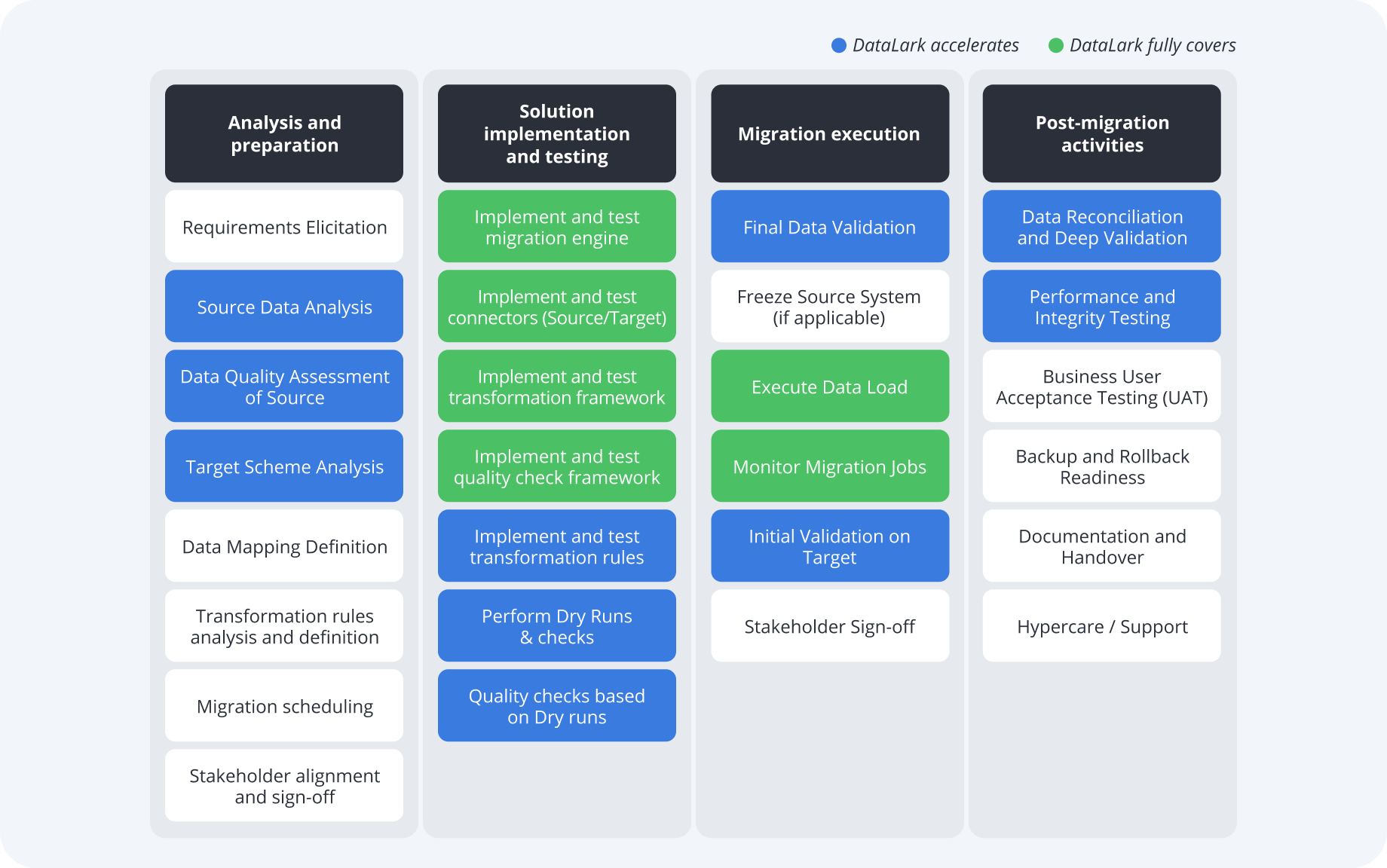
to
SAP S/4HANA Migration
We've earned the trust of global enterprises
A Step-by-Step Approach to Any Data Migration
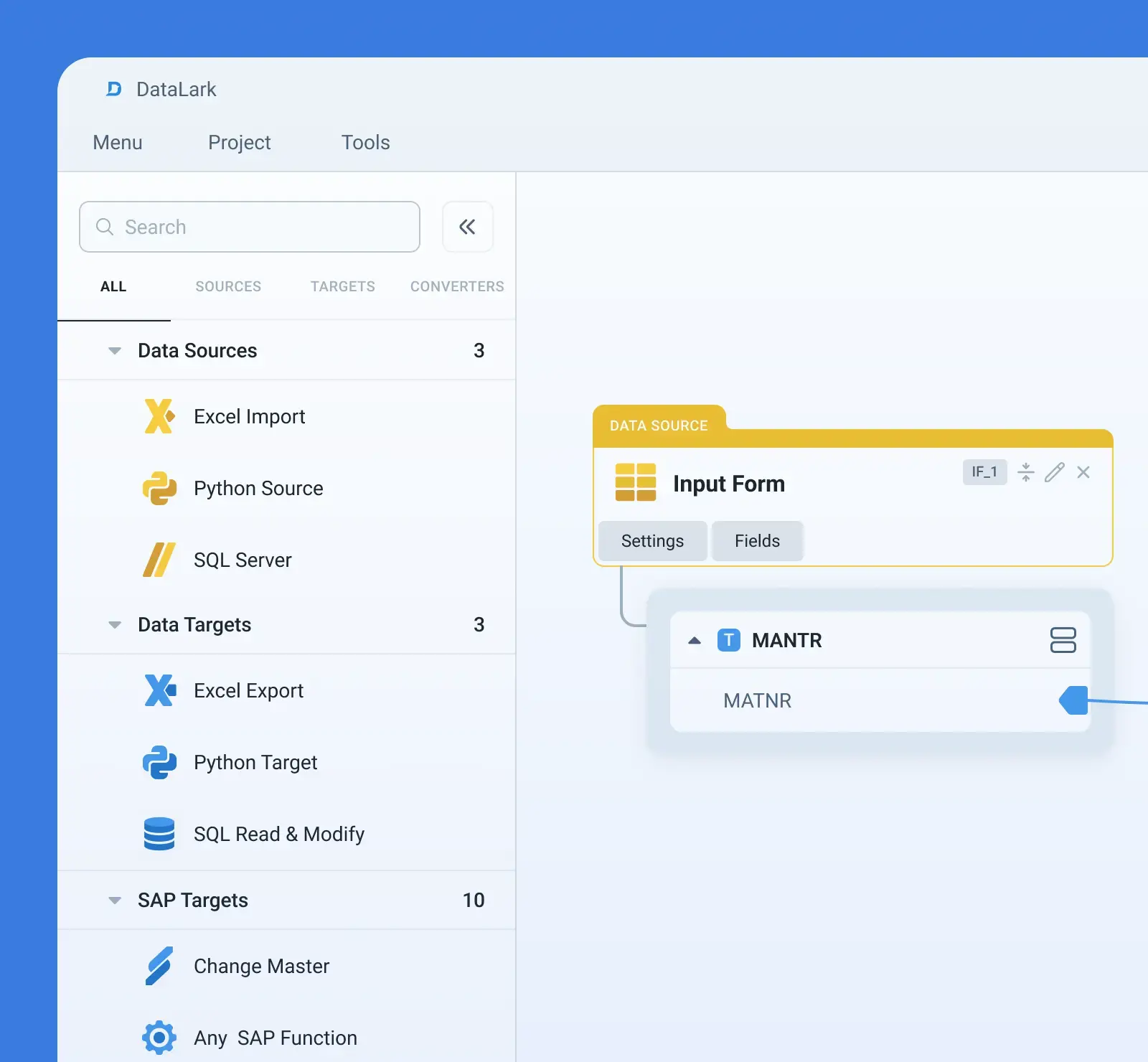
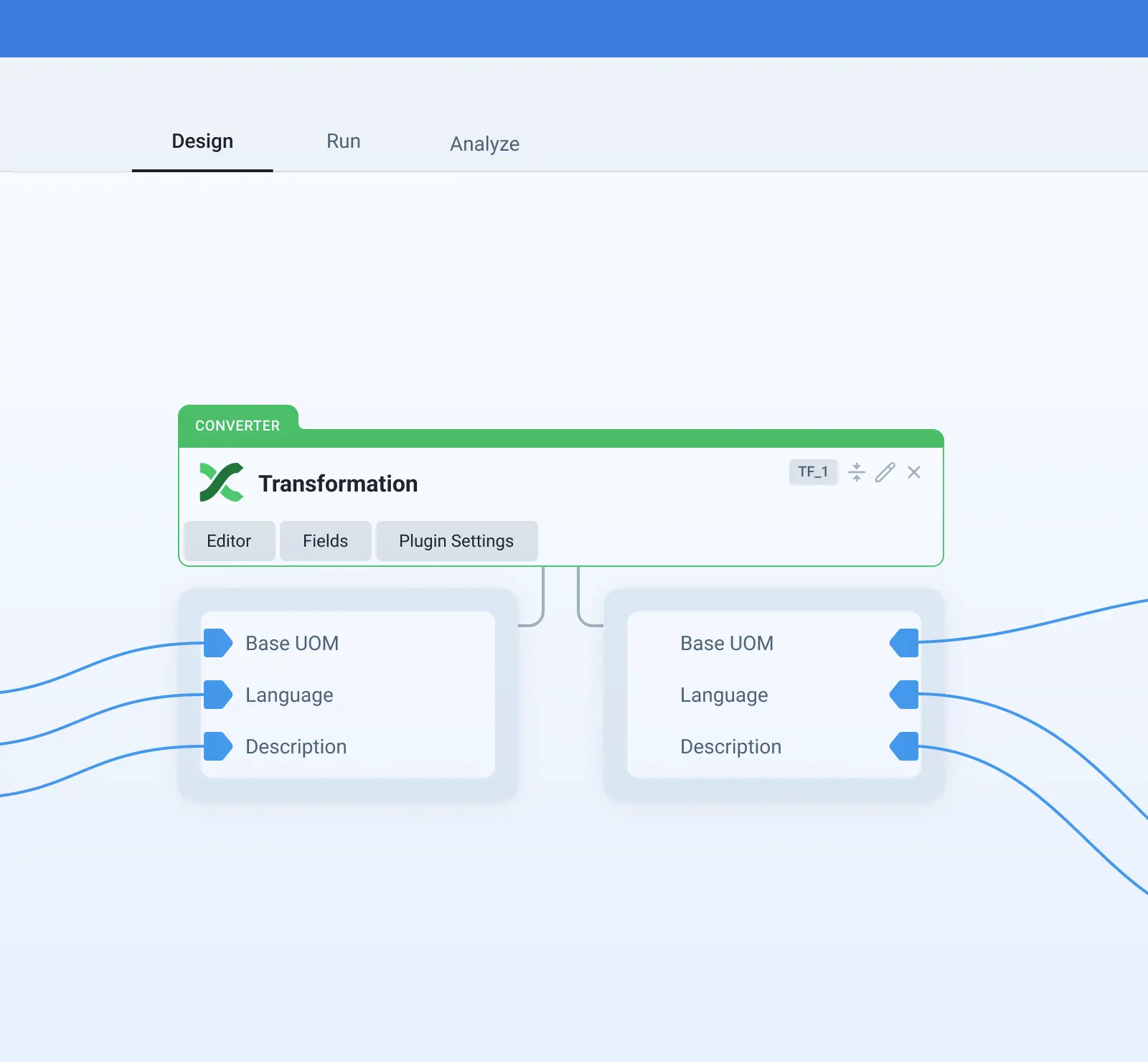
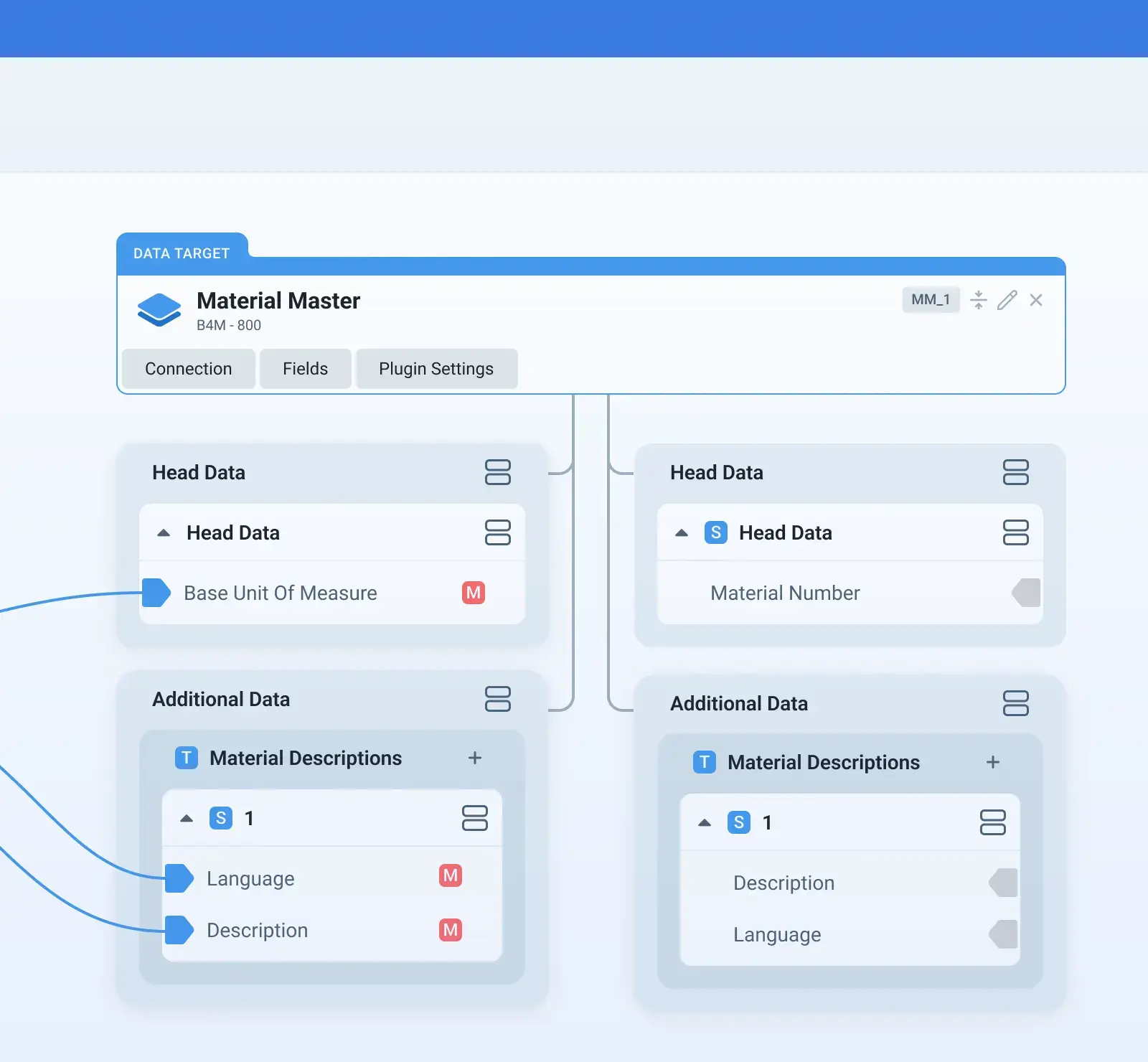
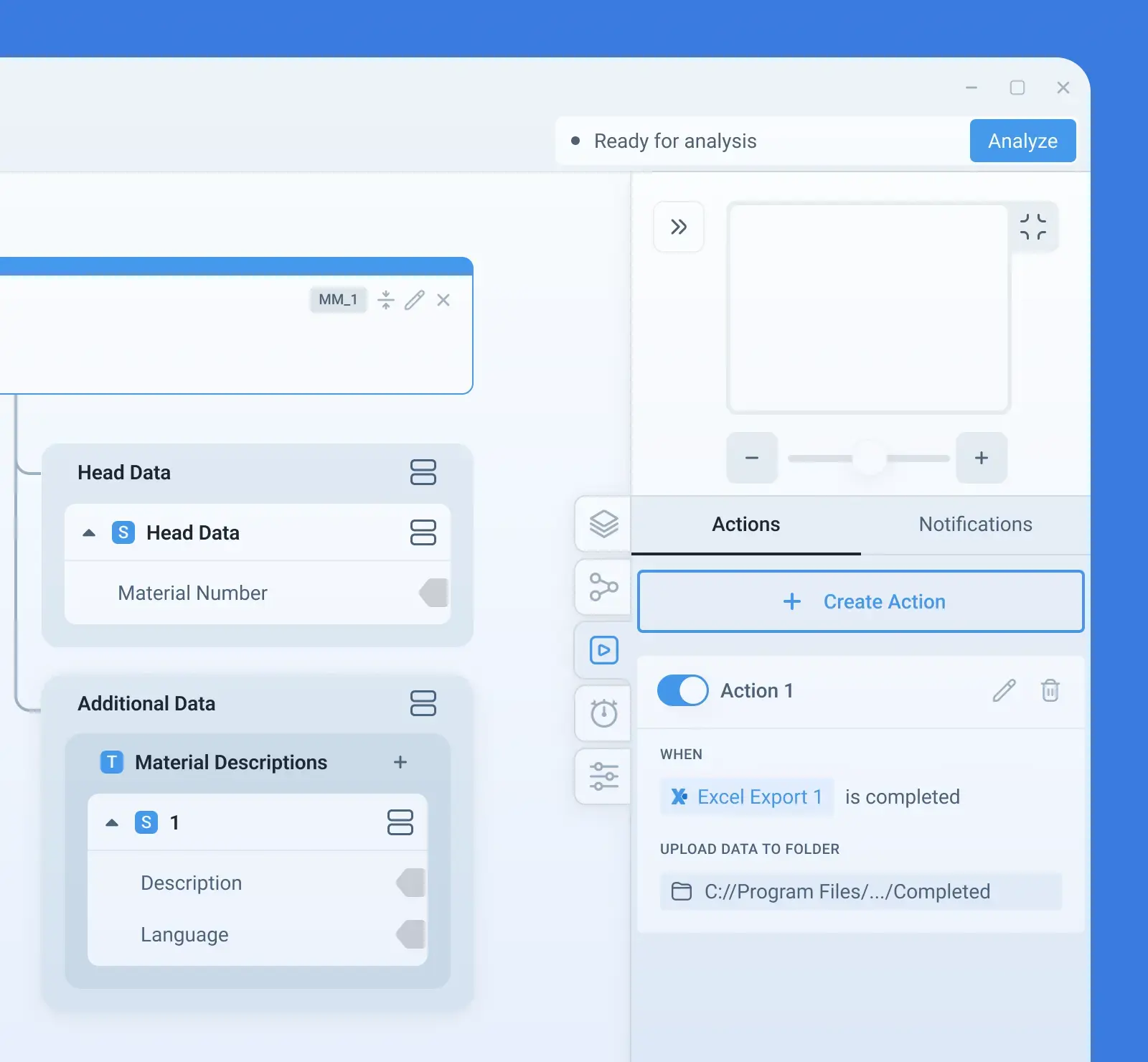
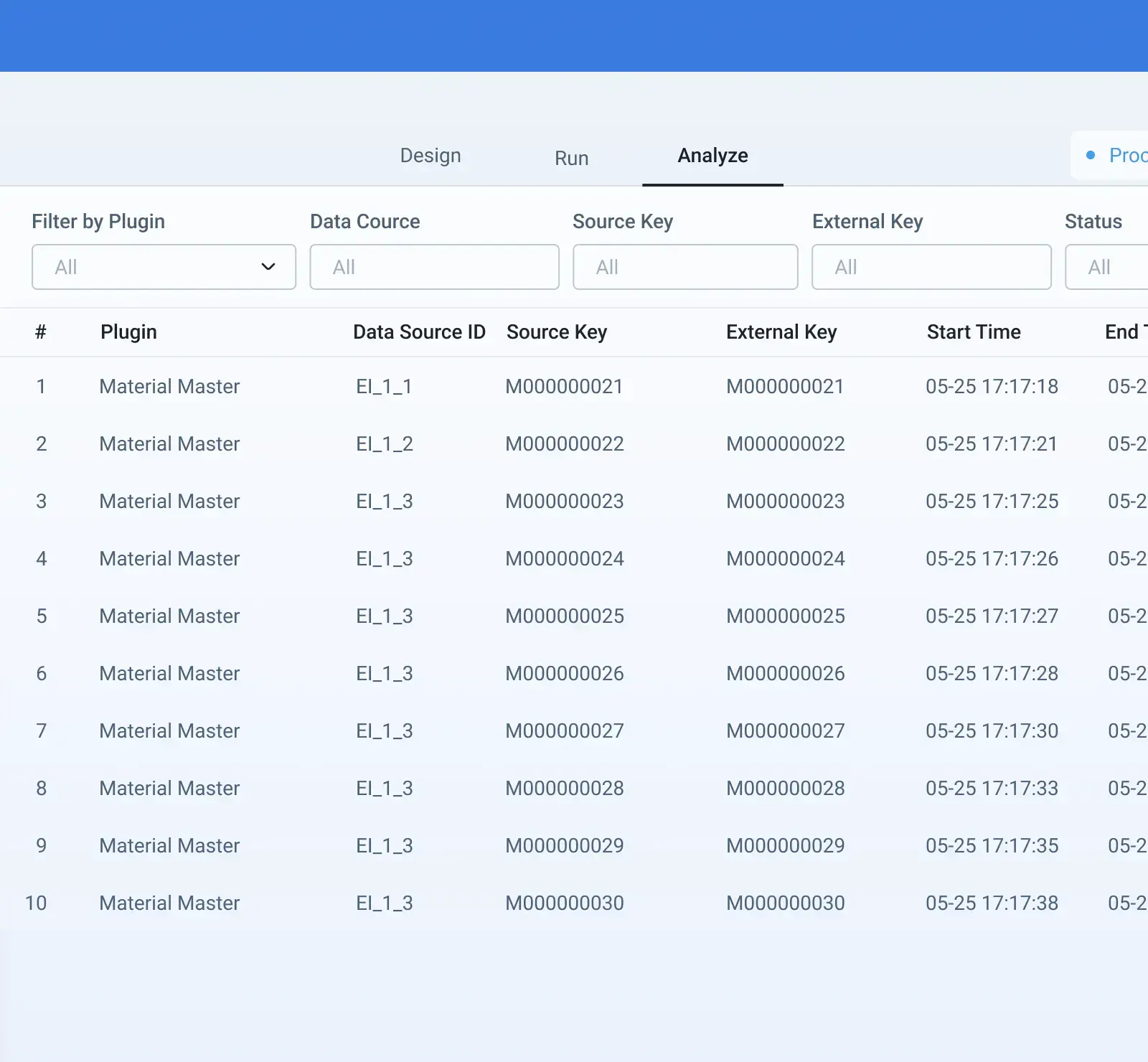
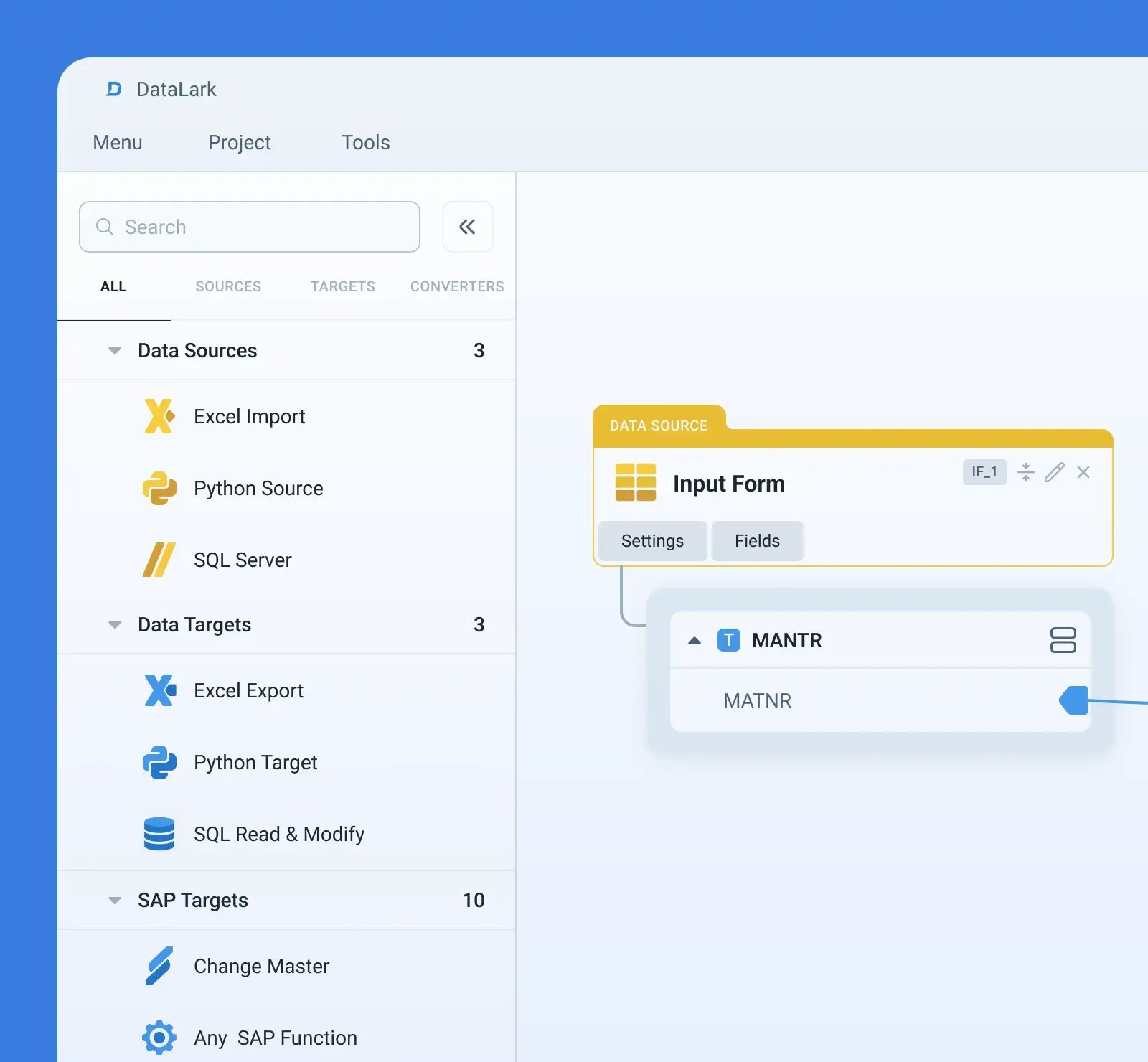

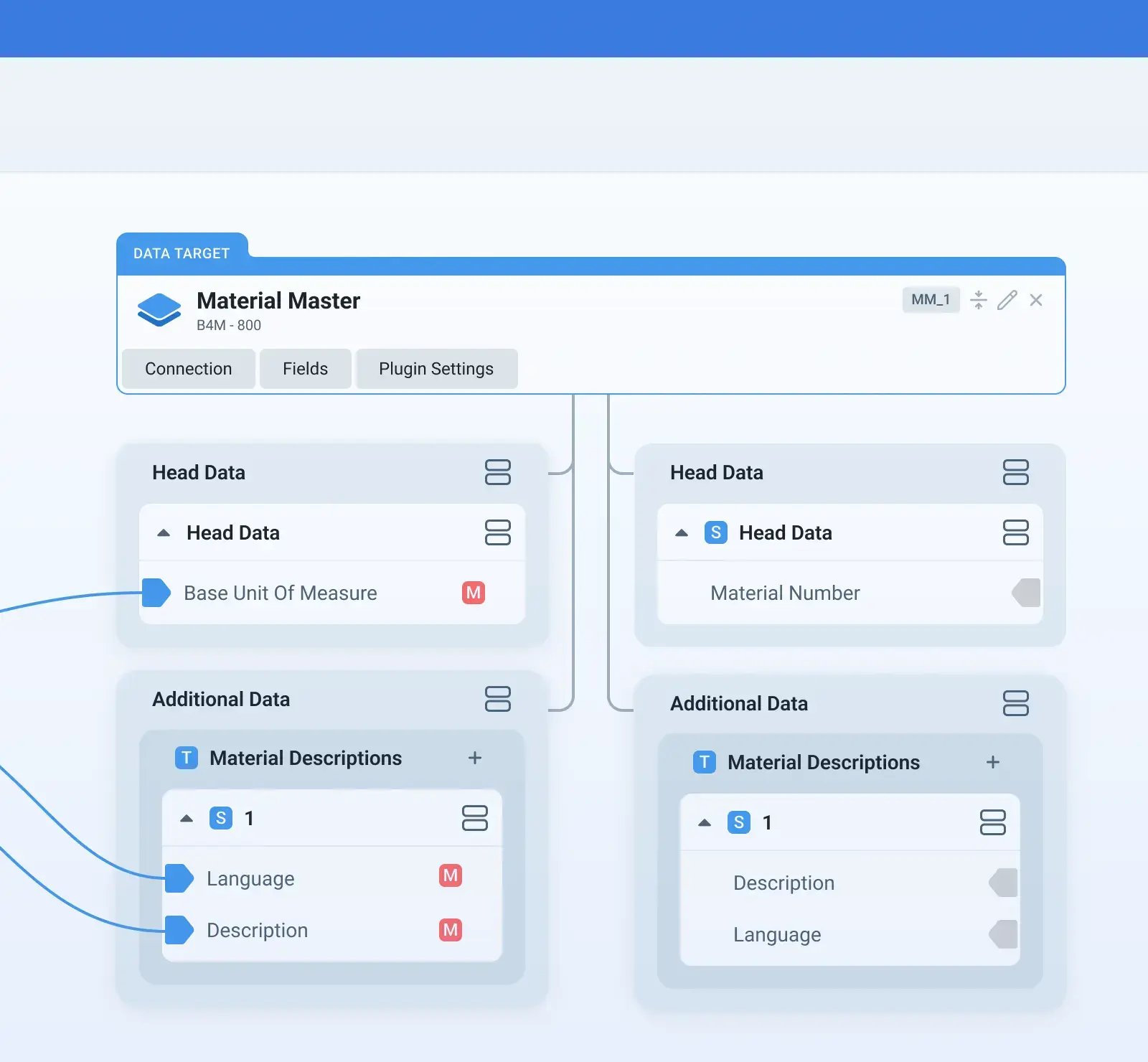
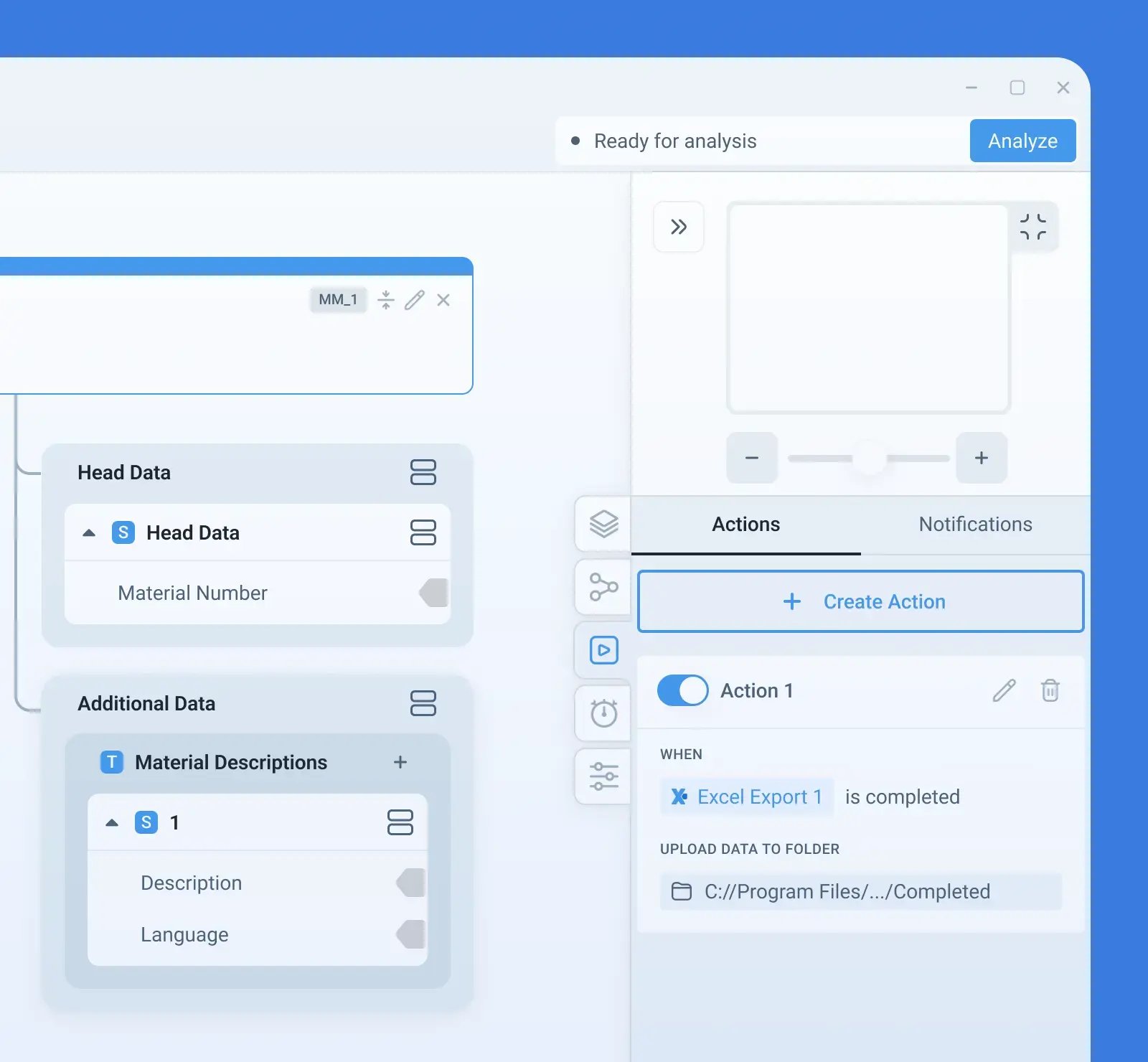
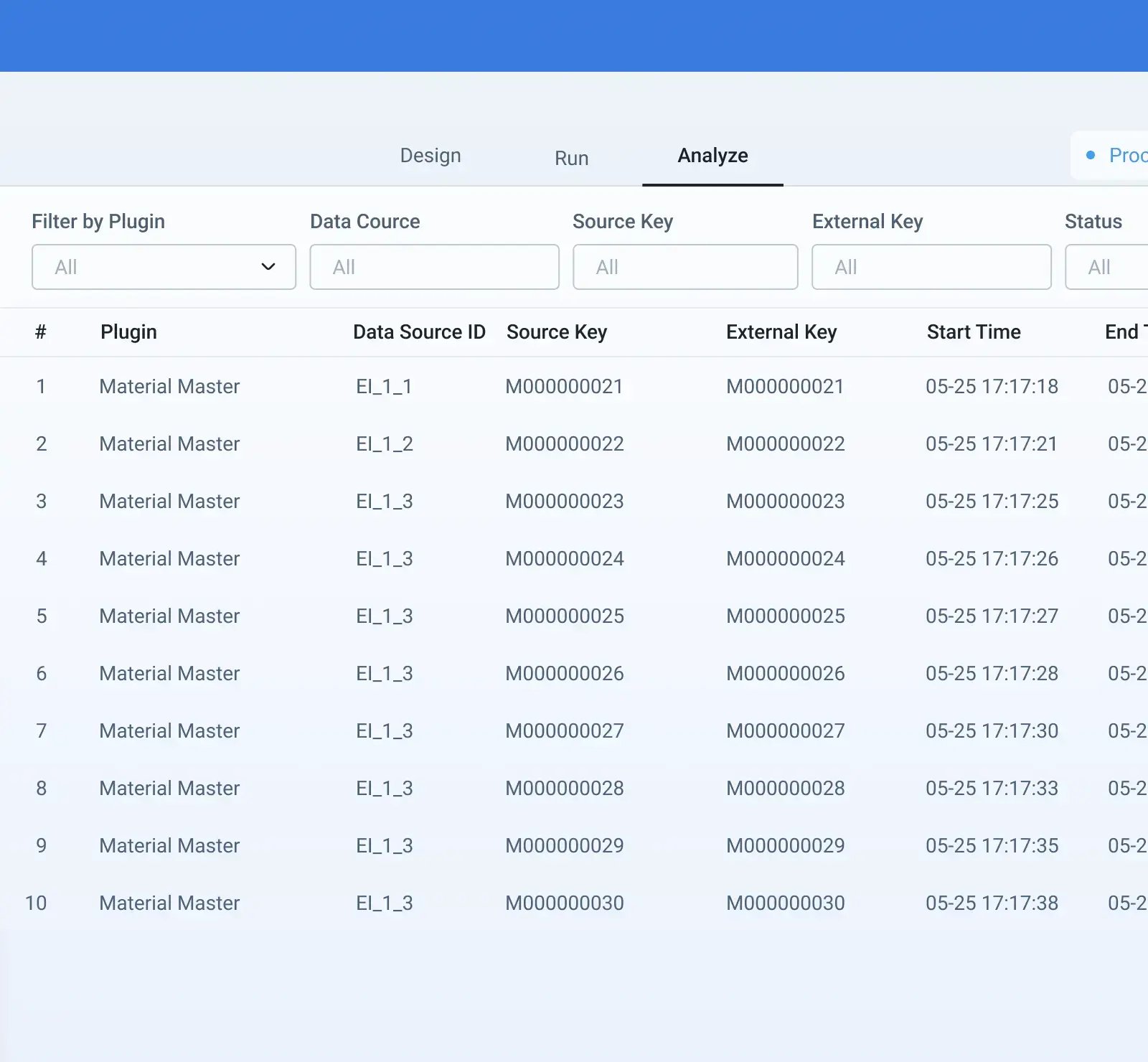
DataLark: Your Bridge to Any Data Destination
DataLark stands as a powerful, all-encompassing solution for organizations navigating complex data landscapes. Its core strength lies in its unparalleled ability to connect to, extract from, transform, and load data into virtually any system. This broad compatibility makes DataLark an indispensable tool for diverse migration and integration projects, far beyond just SAP S/4HANA.
DataLark supports data handling from an extensive array of systems and formats, including:
Real-World Data Migration Scenarios
Powered by DataLark
Migrating from Legacy Non-SAP Systems to Modern ERPs (e.g., S/4HANA)
This is a frequent scenario where organizations transition from older, disparate systems to a consolidated, modern ERP like SAP S/4HANA. DataLark excels at extracting, transforming, and loading data from a multitude of legacy sources.
Source Systems
Oracle E-Business Suite, Microsoft Dynamics, JD Edwards, PeopleSoft, Salesforce, Oracle Siebel CRM, Siemens Teamcenter, Dassault Systèmes Enovia, PTC Windchill, Oracle Agile PLM, Workday, various databases (Oracle, MSSQL, IBM Db2, PostgreSQL), and file formats (CSV, Excel, XML, JSON).
Target Systems
SAP S/4HANA, other modern ERPs, or consolidated data warehouses.
Real-world examples
World's leading provider of water heating and water treatment solutions migrating to SAP S/4HANA
The customer faced the challenge of migrating their legacy document management system, including critical data from Agile Documents, SmarTeam Documents, and SmarTeam Document Structures, into their new S/4HANA environment. DataLark managed the entire process, from extraction and profiling to cleansing, mapping, transformation, loading, and post-load activities, ensuring a seamless and secure transition for their vital business documents.
A global leader in orthopedic surgery migrating from Agile PLM to SAP
The customer successfully migrated a massive 433,000 documents from their legacy Agile PLM system to SAP. This extensive project involved transferring document header data, classifications, originals, and object links, demonstrating DataLark's capacity to handle vast volumes of intricate data from non-SAP PLM systems with precision.
Inter-SAP System Migrations and Upgrades
Even within the SAP ecosystem, migrations between different versions or modules can be complex. DataLark simplifies these transitions, ensuring data integrity and consistency.
Source Systems
SAP ECC, SAP R/3, SAP Business One, older SAP CRM versions.
Target Systems
SAP S/4HANA, SAP Hybris, or other updated SAP modules.
Real-world examples
A leading global manufacturer of high-performance thermoplastics migrating from SAP ECC to 3DX
The customer executed a significant PLM object migration from SAP ECC to 3DX. This project encompassed the migration of Material Master, Bill of Material, Routings, and Change Master data. The case highlights DataLark's remarkable ability to facilitate migrations not only between different SAP environments but also to other integrated systems like 3DX, ensuring data consistency across platforms.
Data Consolidation and Integration into Centralized Platforms
Organizations often need to consolidate data from various sources into a central data warehouse, data lake, or a new enterprise application for unified reporting, analytics, or operational efficiency.
Source Systems
A mix of ERPs (SAP, Oracle, Microsoft Dynamics), CRMs (Salesforce, Oracle Siebel), PLMs, HR systems, various databases, and file-based data.
Target Systems
Data warehouses (e.g., Snowflake), data lakes, new cloud-based applications, or master data management (MDM) systems.
Real-world examples
A global leader in energy management consolidating data in SAP S/4HANA
The customer migrated a diverse range of legacy data to S/4HANA, including Material Master, Bill of Material, Document Info Record, Business Partners, and Classification data. This project clearly showcased DataLark's versatility in handling varied data objects that are absolutely crucial for efficient operations within the energy sector, consolidating them into a unified S/4HANA system.
Complex System Consolidations and Custom Migrations
Some projects involve highly customized systems or require the migration of very specific, often unique, data objects. DataLark's flexibility allows for tailored solutions to these intricate challenges.
Source Systems
Highly customized legacy systems, specialized industry-specific applications, non-standard data formats.
Target Systems
Modern ERPs, specialized industry solutions, or custom-built applications.
Real-world examples
A multinational powerhouse migrating legacy quote-to-cash system to SAP S/4HANA
The customer encountered over 100 distinct migration scenarios during their transition of a legacy quote-to-cash system to S/4HANA. DataLark provided tailored data migration solutions for highly complex objects, including Master Data, Quotes, Sales Orders, Purchase Orders, Manufacturing Orders, Inventory, and PS/WBS/Networks. This project stands as a testament to DataLark's exceptional adaptability in navigating even the most intricate enterprise environments.
An electric motorcycles manufacturer migrating CAD and non-CAD data to SAP S/4HANA
The customer successfully migrated both non-CAD (DMS) and CAD data to S/4HANA. This specialized project involved the meticulous handling of Document Info Records, underscoring DataLark's unique capability to manage highly specialized data types, such as CAD drawings and their associated documentation, during a critical S/4HANA transition.
Request a Demo
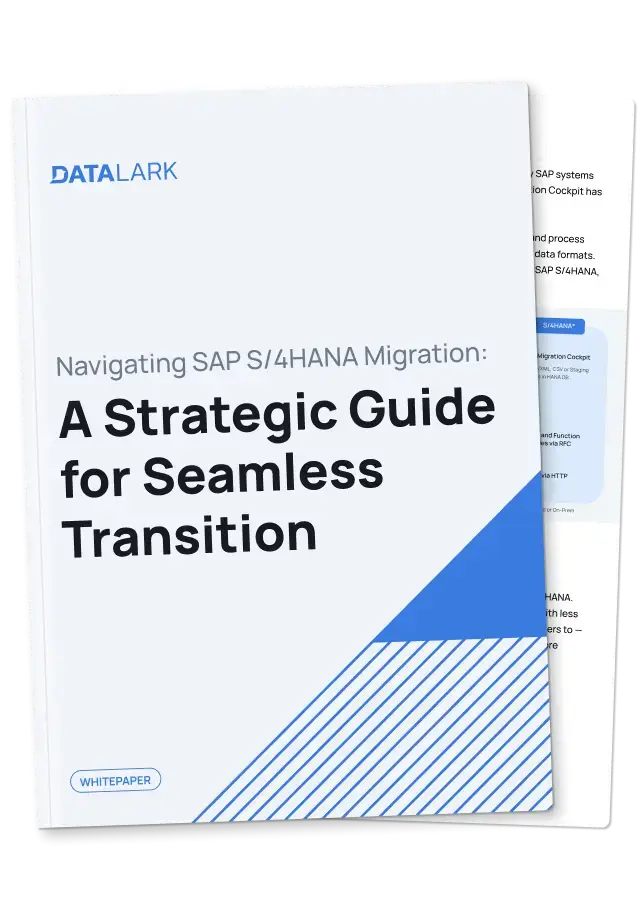
Get Our Free Whitepaper
FAQ
-
What types of data migration does DataLark support?DataLark handles end-to-end enterprise migration projects, supporting migrations from legacy ERP systems, CRM, PLM, transactional databases, custom tables, and flat files, into SAP ECC, SAP S/4HANA, as well as non‑SAP targets. It manages master data (e.g. Materials, Business Partners) and transactional data (e.g. sales orders, invoices, production records), with specialized data flows for selective migration, phased cutovers, and clean core strategies. Designed for hybrid landscapes, DataLark connects on-premise and cloud systems seamlessly, ensuring consistent data flows across both environments.
-
How does DataLark simplify mapping and transformation?
DataLark combines a visual drag-and-drop interface with AI-powered automation to simplify even the most complex data preparation tasks. The platform not only lets users define mappings and transformations without writing code, but also uses AI to suggest field pairings, detect inconsistencies, and propose data quality rules. This dramatically reduces configuration time and errors.
Beyond mapping, the transformation engine supports cleansing, enrichment, normalization (e.g., unit standardization), conditional logic, string operations, filtering, joins, and aggregations — all in a single low-code environment. When extra flexibility is needed, users can add custom Python logic for advanced validations or domain-specific rules.
-
Are templates available to speed up migration setup?DataLark includes a library of pre-built migration packages optimized for SAP ECC and S/4HANA. These packages cover:
- Core Master Data (e.g., Materials, Business Partners),
- Transactional Data (sales orders, invoices, production records),
- Document Management (Document Info Records),
- Custom Structures for industry-specific needs.
Each package follows SAP best practices and is designed for rapid deployment so that many teams can start configuring in days instead of weeks or months.
Examples of package types:
- ‘Finance Foundation’ for FI objects and chart of accounts,
- ‘Logistics Essentials’ for MM and SD data flows,
- ‘PLM Sync’ for engineering and BOM integration.
Reusable configurations ensure consistency across projects and simplify rollout across multiple business units or regional implementations, delivering faster ROI and reducing technical complexity.
-
Can non-technical users run migration tasks?
Absolutely. DataLark’s zero-code / low-code interface empowers business analysts, consultants, and domain experts to steward migration workflows without IT dependencies. Users can build mappings, validation checks, schedules, and automation flows entirely visually. Technical oversight is still available for custom scripting, security configuration, or advanced performance tuning when needed.
This user empowerment accelerates project agility, reduces reliance on scarce development resources, and improves stakeholder collaboration.
-
What validation and data quality checks are available?
DataLark includes an embedded validation engine that supports duplication detection, referential integrity checks, format consistency rules, custom business logic, and data profiling. AI-driven anomaly detection can surface inconsistencies or missing values, enabling users to correct issues upstream before actual loading. Simulated test runs further mitigate risk.
Profiles are presented visually so users can spot outliers or statistical discrepancies early. All validation issues are flagged and managed via the UI with exception handling and reporting.
-
Does DataLark support test migrations and simulation?
Yes, DataLark facilitates simulation capability with dry-run test cycles, enabling iterative validation before production cutover. These sandbox executions mimic migration logic, transformation rules, and data loading, but without finalizing changes in target systems. This allows migration teams to refine workflows, correct issues, and gain confidence in results before committing.
Such practice expedites go-live readiness and lowers post-migration issues significantly. Moreover, reusable test scenarios can be automated for phased or multi-wave migration projects.
-
How is load execution handled in SAP migrations?
DataLark supports multiple SAP-compatible data load methods: SAP BAPIs, RFC/OData APIs, XML or CSV templates for SAP Migration Cockpit, and direct staging uploads. It adapts to both ECC and S/4HANA environments, on-premise or in-cloud.
Migration flows can be customized — e.g., batch loading via Migration Cockpit, or interactive loads via API triggers — depending on volume or complexity. You can also configure post-load validation to reconcile source and target records and trigger downstream updates automatically.
-
How does orchestration and automation work?DataLark lets you define and automate the entire migration lifecycle: extraction, mapping, validation, transformation, loading, and post-validation. You can schedule flows, trigger via APIs or webhooks, and define error-handling and retry logic with notifications. Execution tracking is visible in detailed logs and reports.
-
What deployment options does DataLark offer?
DataLark supports flexible deployment: on-premise, private or public cloud, or hybrid environments. You’re free to choose installation approaches that match infrastructure policies, regulatory requirements, or existing data architecture.
Scalability adjusts to growing volume and complexity — whether migrating small datasets or large enterprise operations — without compromising performance.
-
How does DataLark support hybrid/multi-source consolidation migrations?
The platform is built for multi-system consolidation — it connects to diverse sources such as ERP, CRM, PLM, MES, cloud services, or custom databases — harmonizing data via unified migration workflows. This is ideal for M&A integrations, divestitures, or unified reporting transitions.
Cross-system data flow templates and normalization rules help merge fragmented datasets, standardize content, and load into SAP or other core systems, keeping data integrity intact.
-
What ROI or productivity benefits can be expected?
Customers typically achieve ~60% faster migration times, ~60% productivity gains, and up to 70% reduction in operational costs, thanks to AI-assisted automation, reusable templates, and reduced manual effort.
With broad automation and intuitive workflows, teams avoid scripting, manual rework, and repeated effort — leading to faster project timelines, lower risk, and measurable business impact.
-
Do you offer a demo or free trial?Yes! You can schedule a personalized demo to see how DataLark works with your specific systems and use cases. We also offer a guided free trial to help you evaluate the platform hands-on in your own environment.